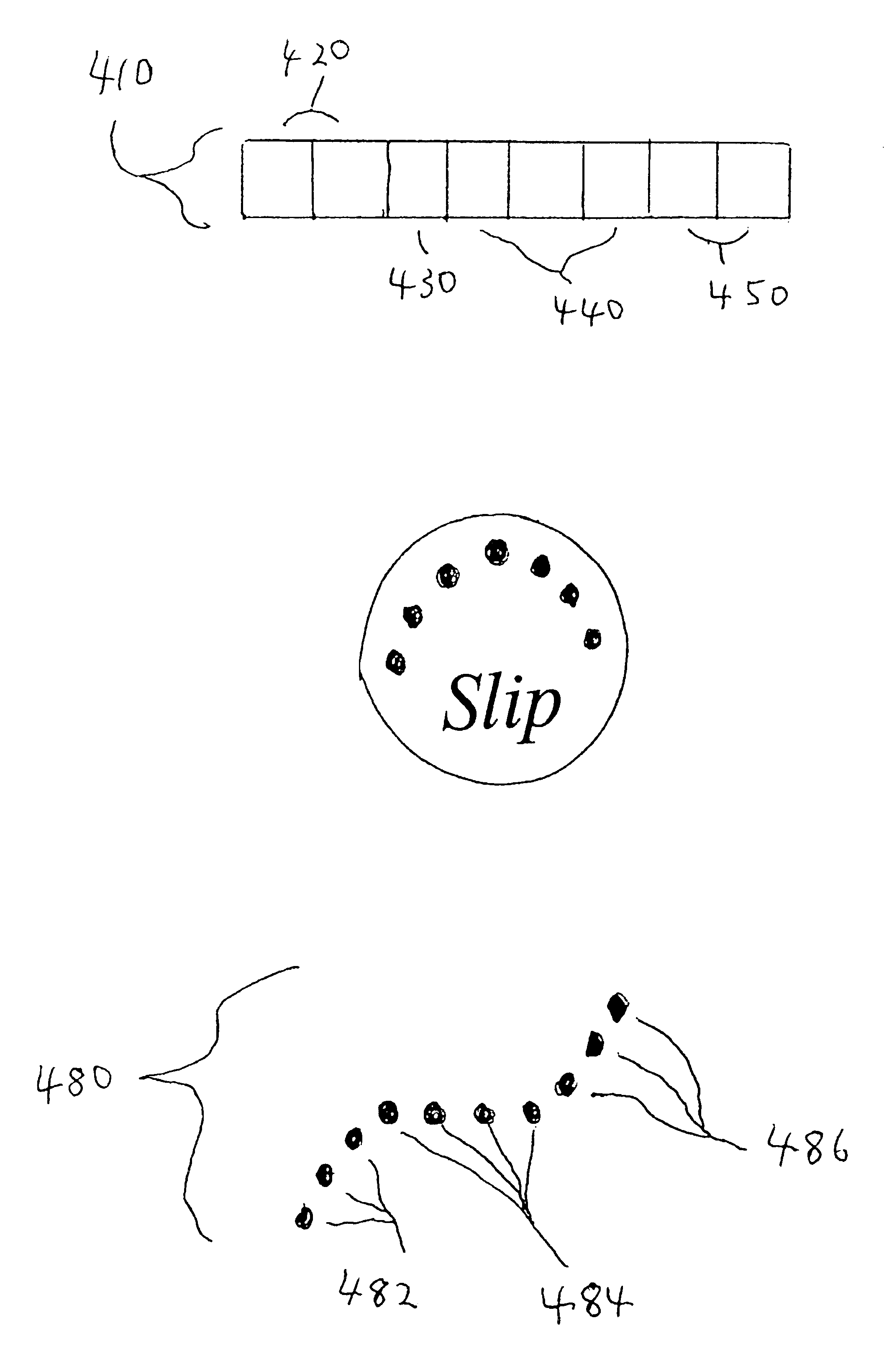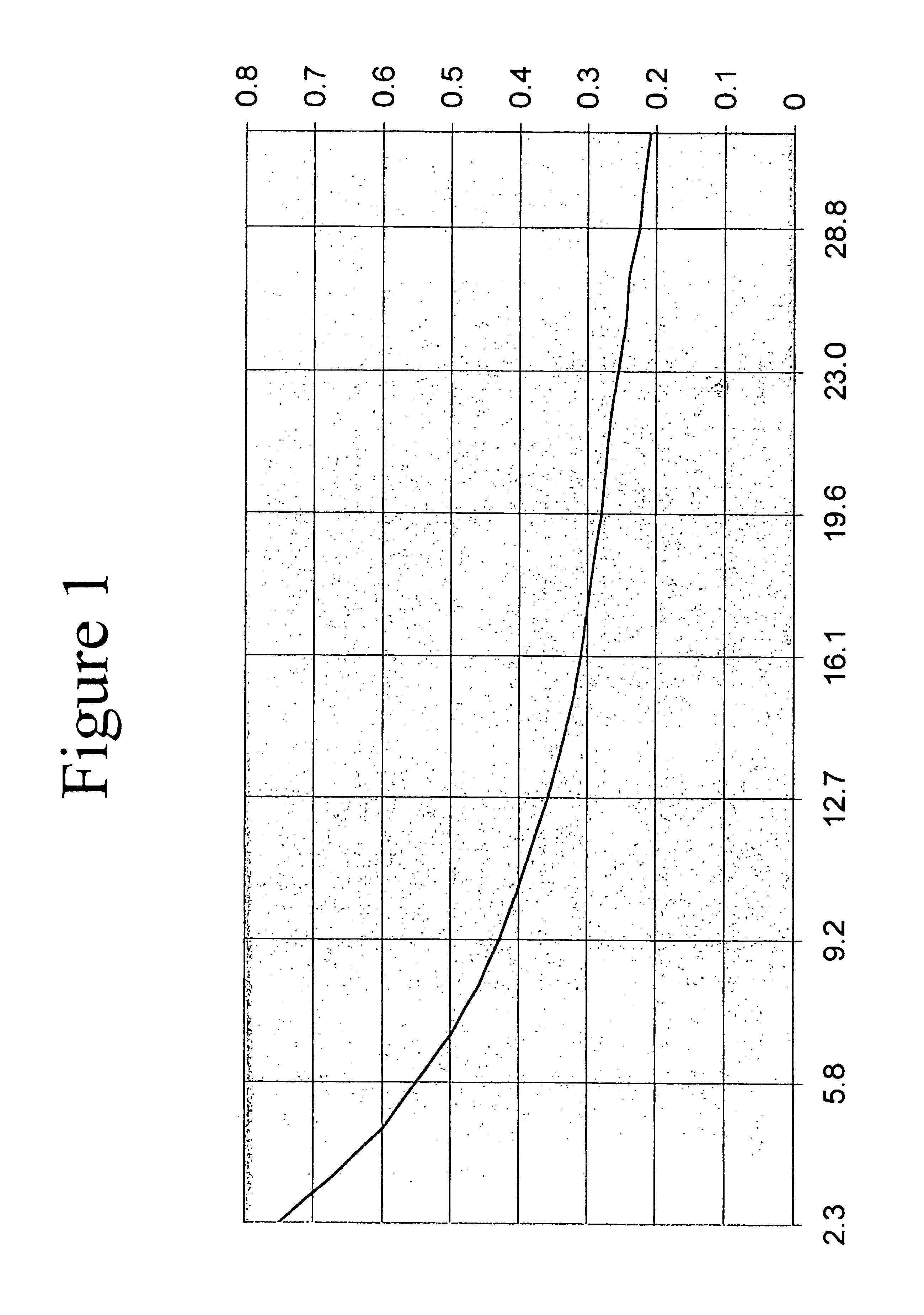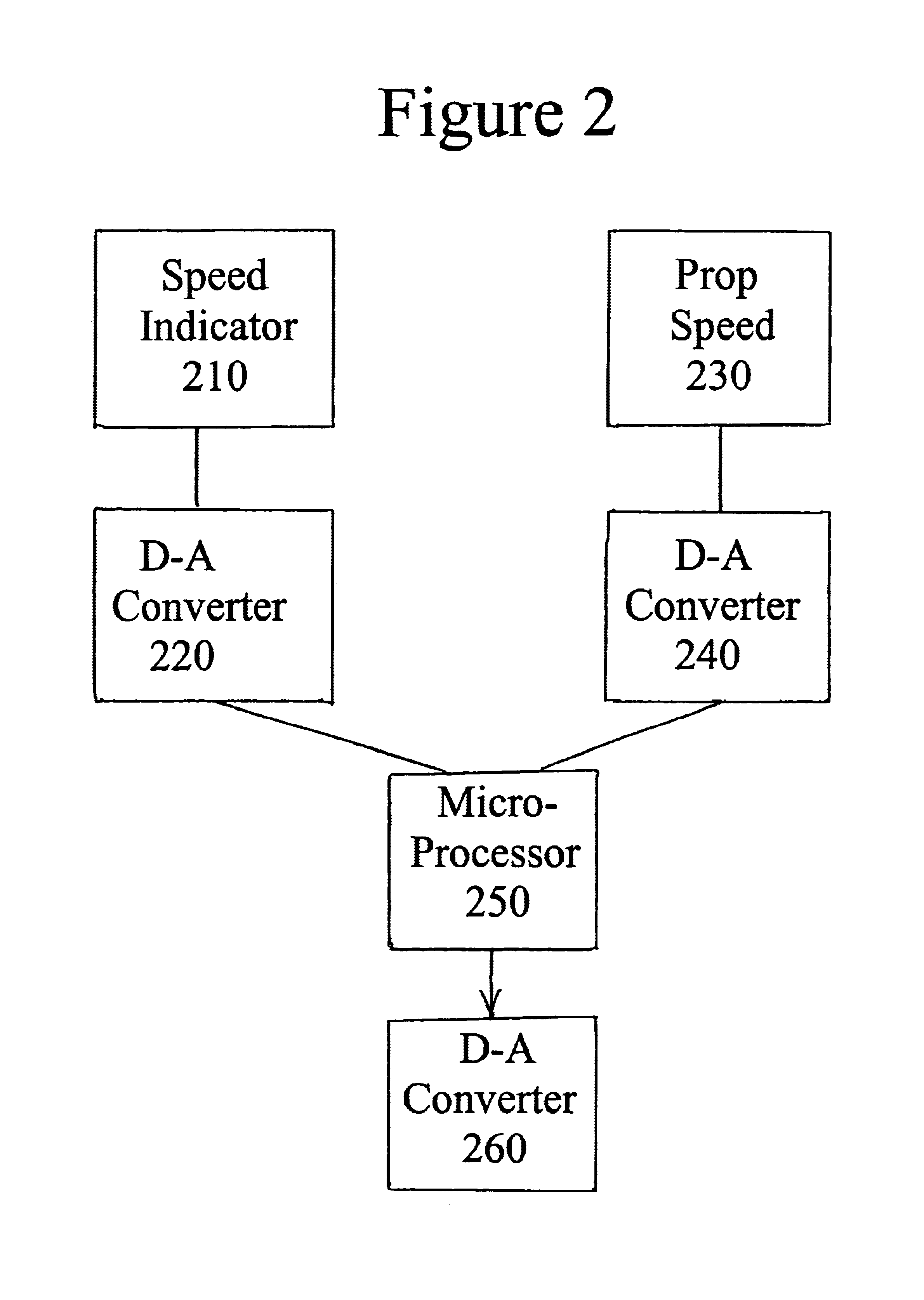Monitoring and control of watercraft propulsion efficiency
a technology of propulsion efficiency and monitoring and control, which is applied in the direction of navigation instruments, vessel construction, instruments, etc., can solve the problems of propeller not moving water, slipping, and simply increasing the power of the propeller does not automatically translate proportionally into increasing the speed, so as to reduce the cavitation, improve the speed, and improve the speed
- Summary
- Abstract
- Description
- Claims
- Application Information
AI Technical Summary
Benefits of technology
Problems solved by technology
Method used
Image
Examples
example 1
[0060]This example shows the generation of boat speed and propeller speed signals, and use of those signals to generate a ratio slip signal. An analog propeller speed signal is obtained by a hall effect sensor purchased from Westberg Mfg. Inc. of Sonoma, Calif. wired to a LM2917 chip. An analog boat speed signal is obtained by a hall-effect paddle wheel speed sensor attached to the trailing edge of a skis from a Maruta watercraft manufactured by ElectroCruise Boats of Homosassa Springs, Fla. The two analog signals are adjusted to provide equal ranges for each by setting amplification and zero level as needed. The adjusted signals are then converted to log form using operational amplifiers as log amplifiers with transistor junctions in their feedback loops. The log outputs are fed into a difference amplifier circuit, which subtracts the boat speed log signal from the propeller log signal to generate the ratio slip signal. The ratio signal represents both negative apparent slip (when ...
example 2
[0061]This example shows the generation of a positive slip indicator signal. Two adjusted analog signals are formed as described in Example 1. The boat speed signal is subtracted from the propeller speed signal by a difference amplifier and this difference is used as an absolute slip signal for an analog slip meter. In a second experiment the difference signal is fed into a log amplifier to decrease the dynamic range of the signal to allow more convenient use of an analog indicating device.
example 3
[0062]This example shows generation of a cavitation signal. The signal output from example 1 is fed into a comparator and a reference signal corresponding to a high slip value equivalent to a slip of 100% is fed into the comparator. The comparator output is used to signal a chime. When the signal output of example 1 exceeds the reference signal the comparator turns on the chime, alerting the watercraft operator of excessive slip condition. In a separate experiment the comparator output is further processed to indicate whether the high slip condition occurs during low watercraft speed or at cruising speed. In this latter experiment a boat speed signal is fed to a threshold level detector that outputs a signal when the boat speed achieves half maximum speed. That signal is used to select a second piezo electric buzzer that signals when high (above 100%) slip occurs at higher speed condition.
PUM
 Login to View More
Login to View More Abstract
Description
Claims
Application Information
 Login to View More
Login to View More - R&D
- Intellectual Property
- Life Sciences
- Materials
- Tech Scout
- Unparalleled Data Quality
- Higher Quality Content
- 60% Fewer Hallucinations
Browse by: Latest US Patents, China's latest patents, Technical Efficacy Thesaurus, Application Domain, Technology Topic, Popular Technical Reports.
© 2025 PatSnap. All rights reserved.Legal|Privacy policy|Modern Slavery Act Transparency Statement|Sitemap|About US| Contact US: help@patsnap.com



